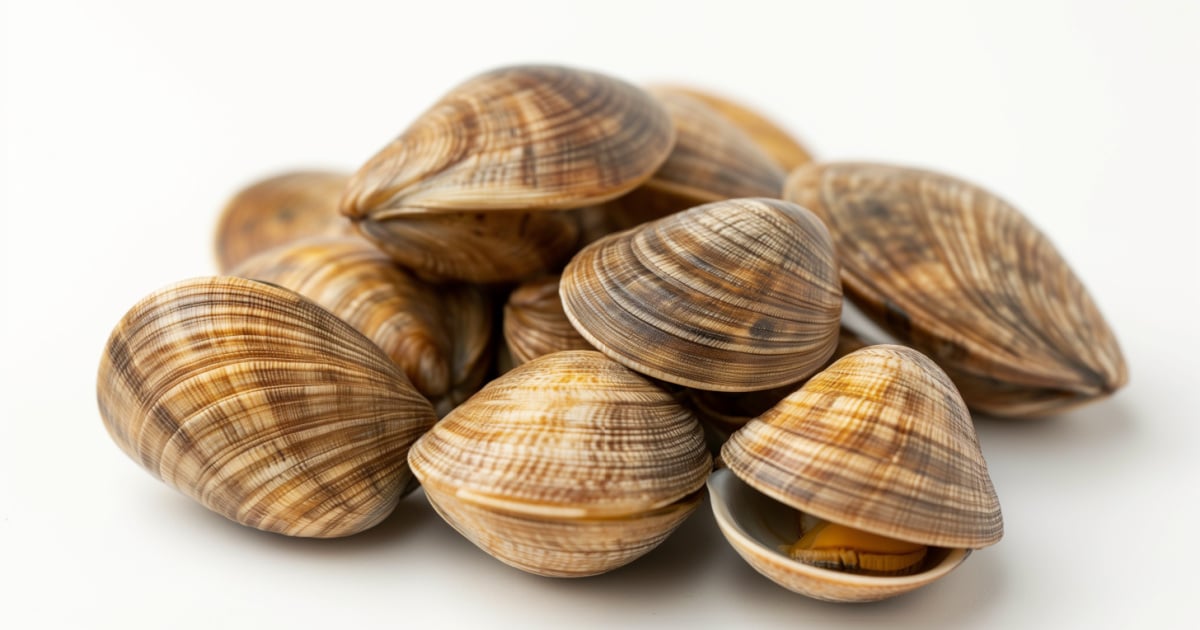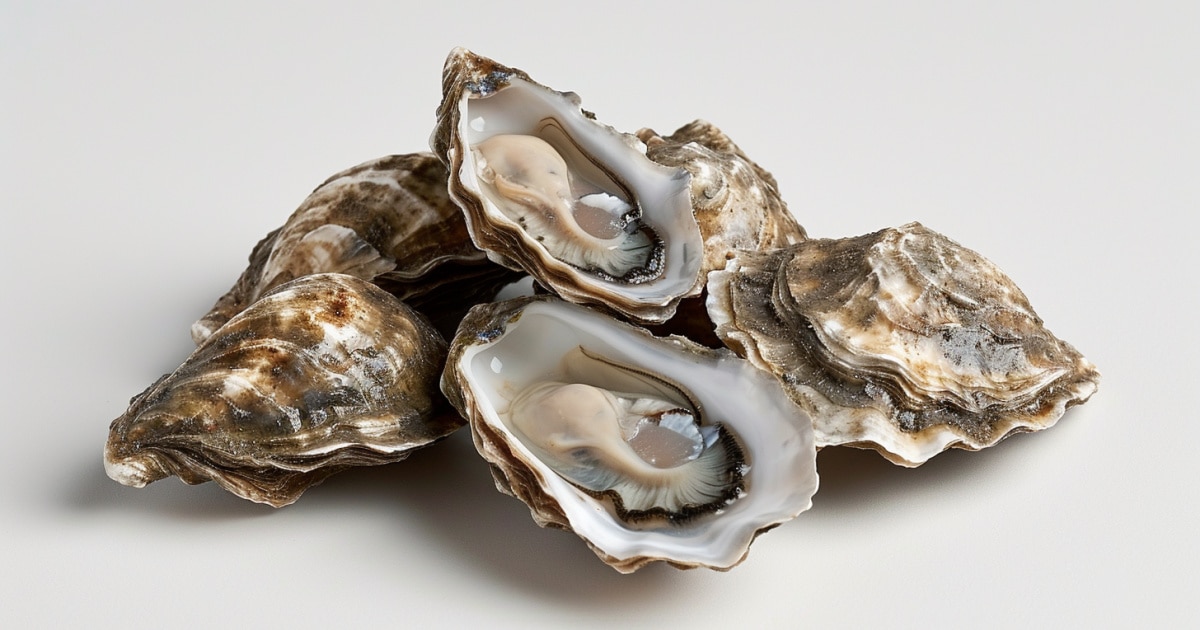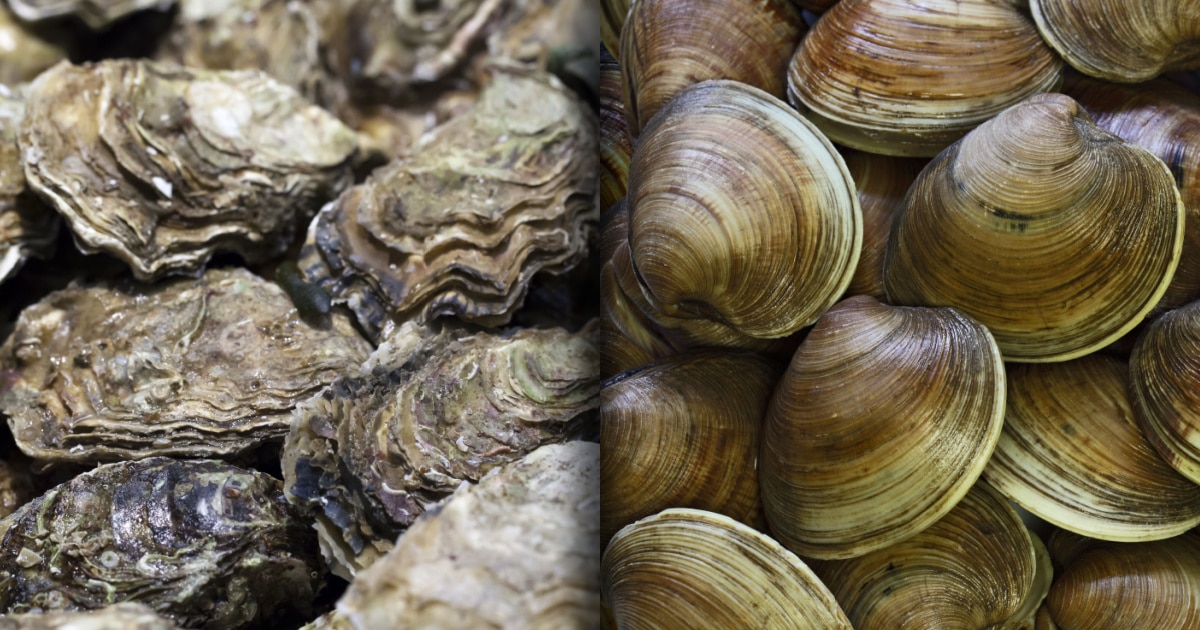Clams vs Oysters: Unveiling the Seafood Mysteries
Welcome to our exploration of ‘Clams vs Oysters‘ – two stars of the seafood world that often leave diners and chefs alike intrigued. As a seafood enthusiast, you’ve likely encountered both, but have you ever paused to ponder what really differentiates these two shellfish?
In this article, we’re delving deep into the clams vs oysters debate. We’ll uncover the distinct features of each, from their appearance and habitats to their culinary uses and nutritional profiles. Whether you’re a seasoned seafood lover or new to the world of shellfish, understanding these differences can elevate your dining and cooking experiences.
Join me as we navigate through the fascinating nuances of clams and oysters, shedding light on their unique qualities and what sets them apart in the vast ocean of seafood choices.
- Physical Traits: Distinguishing Clams from Oysters
- Habitats Explored: Clams vs Oysters
- Culinary Showdown: Clams vs Oysters in the Kitchen
- Nutritional Face-Off: Clams vs Oysters
- Economic Impact and Market Trends: Clams vs Oysters
- Environmental Role: Water Filtration and Ecosystem Impact of Clams and Oysters
- Celebrating the Diversity of Shellfish: Clams and Oysters
- FAQs: Understanding Clams vs Oysters
- Explore More From T.L. Morris Seafood
Physical Traits: Distinguishing Clams from Oysters
When comparing clams and oysters, their physical traits are a great starting point. Understanding these differences can enhance your seafood selection, whether you’re cooking at home or choosing a dish at a restaurant.
Clams typically have a more uniform, oval shape with two equally sized shell halves. Their shells are generally smoother and can range in color from light grey to deep brown. Inside, clam meat is usually pale and tender, offering a slightly chewy texture when cooked.
Oysters, in contrast, have irregular and rough shells. They’re not as symmetrical as clams, with one flat shell and one curved. Oyster shells have a more rugged texture and can vary greatly in color and size, often reflecting the specific environment where they grew. The meat of an oyster is plumper compared to clams and can have a more varied color palette, from creamy to a greyish hue.
These physical distinctions aren’t just for show; they also hint at the different environments these shellfish inhabit and their unique roles in the ecosystem. By recognizing these traits, you can better appreciate the diversity and beauty of these marine delicacies.
Habitats Explored: Clams vs Oysters
In the ‘Clams vs Oysters’ discussion, their habitats play a crucial role in understanding their lifestyles and the distinct flavors they bring to our plates.
Clams are incredibly versatile in their habitat choices. They can be found burrowed in the sandy or muddy bottoms of both freshwater and saltwater environments. This adaptability allows them to thrive in a variety of locations, from calm inland rivers and lakes to the dynamic shores of oceans. The habitat of a clam often influences its size, taste, and texture, with subtle differences between freshwater and saltwater varieties.
Oysters, on the other hand, are typically saltwater dwellers. They favor brackish waters, such as estuaries and bays, where freshwater mixes with the sea. Oysters are known for their ability to form oyster reefs by attaching themselves to rocks, other shells, or any hard substrate. These reefs not only serve as their habitat but also play a vital role in protecting shorelines and providing homes for other marine species. The specific minerals and nutrients in their environment significantly impact the flavor profile of oysters, giving rise to the concept of ‘merroir’ – similar to how ‘terroir’ affects wine.
Understanding the habitats of clams and oysters is key to appreciating their culinary attributes. Each environment imparts unique qualities to these shellfish, making the ‘Clams vs Oysters’ comparison even more intriguing for seafood lovers.

Culinary Showdown: Clams vs Oysters in the Kitchen
When it comes to cooking and eating, the clams vs oysters debate takes an interesting turn. Each has its unique flavor and texture, making them favorites in different types of dishes.
Clams have a mild, sweet taste that pairs well with a variety of ingredients. They’re often the star in pasta dishes, chowders, and stews. Clams cook quickly, making them a great choice for fast and flavorful meals. Their meat is tender, and when
cooked properly, it offers a delightful chewiness that’s not too tough. In dishes like linguine with clam sauce or New England clam chowder, clams bring a subtle yet distinct seafood flavor that’s hard to resist.
Oysters, with their strong oceanic flavor, are often enjoyed raw, which highlights their natural taste. When served on the half shell with just a squeeze of lemon or a dash of hot sauce, they offer a fresh, briny flavor that’s a true taste of the sea. Oysters can also be cooked – grilled,
fried, or baked – and are a popular choice in recipes like oyster Rockefeller or oyster stew. Their plump and juicy texture becomes even more pronounced when cooked, providing a rich and savory experience.
Both clams and oysters are versatile in the kitchen, but they cater to different taste preferences. Clams offer a gentler, sweeter flavor suitable for a range of dishes, while oysters bring a bold, briny taste that’s perfect for both simple and sophisticated preparations.
Nutritional Face-Off: Clams vs Oysters
In the nutritional showdown between clams and oysters, both offer impressive health benefits, but they have some key differences.
Clams are a low-calorie option packed with protein, making them a great choice for anyone looking to boost their protein intake without adding too many calories. They are also rich in iron, which is essential for healthy blood cells, and vitamin B12, crucial for nerve health. Additionally, clams provide beneficial minerals like potassium and selenium.
Oysters stand out for their high zinc content, which is vital for immune function and skin health. Like clams, they are also an excellent source of protein and vitamin B12. Oysters contain more omega-3 fatty acids compared to clams, which are known for their heart health benefits. They also offer a good amount of copper and vitamin D.
Both clams and oysters are heart-healthy seafood options. They are low in fat and contain cholesterol-lowering omega-3 fatty acids. The choice between them can depend on specific dietary needs or preferences. For example, if you’re looking to increase your zinc intake, oysters would be the better choice, while clams are ideal for those watching their calorie intake.
In summary, both clams and oysters are nutritious additions to a balanced diet, each bringing its unique set of vitamins and minerals to the table.
Economic Impact and Market Trends: Clams vs Oysters
The economic impact and market trends of clams and oysters highlight their significance in the seafood industry, each with its unique market presence and demand.
Clams have a steady market, thanks to their wide appeal and versatility in various cuisines. They are harvested both from wild beds and through aquaculture, which helps meet the consistent demand. Clams are often more affordable than oysters, making them accessible to a broader range of consumers. This affordability, combined with their culinary flexibility, ensures a stable market for clams.
Oysters, on the other hand, have a more niche market. They are often perceived as a luxury item, especially when served raw in fine dining establishments. The price of oysters can vary significantly based on their type and origin, with some varieties being quite expensive. Oyster farming, or oyster aquaculture, has grown in recent years, catering to the increasing demand for these shellfish. This growth reflects the growing popularity of oysters among food enthusiasts and their status as a gourmet delicacy.
Both clams and oysters contribute significantly to the seafood economy. While clams offer a more budget-friendly option with widespread appeal, oysters bring a touch of luxury and exclusivity, catering to a different segment of the market.
Environmental Role: Water Filtration and Ecosystem Impact of Clams and Oysters
The environmental role of clams and oysters extends far beyond their culinary appeal. Both play a crucial part in maintaining healthy marine ecosystems, primarily through their natural process of water filtration.
Clams and oysters are filter feeders, meaning they consume small particles, such as plankton and algae, from the water. This process not only nourishes them but also helps to clean the water. By filtering out excess nutrients and particulates, they play a vital role in maintaining water clarity and quality. This, in turn, benefits other marine life and helps to keep aquatic ecosystems balanced.
In addition to water filtration, oyster reefs – created by the accumulation of oyster shells – provide essential habitats for a variety of marine species. These reefs offer protection and breeding grounds for small fish, crabs, and other creatures, contributing to biodiversity in marine environments.
The role of clams and oysters in water filtration and as a part of the marine habitat underscores their importance in ecological balance. Their presence in water bodies not only supports their own species but also a myriad of other marine organisms, making them key players in sustaining healthy aquatic ecosystems.

Celebrating the Diversity of Shellfish: Clams and Oysters
In our journey through the ‘Clams vs Oysters’ comparison, we’ve uncovered a world of differences and similarities. From their unique physical traits and habitats to their distinct culinary uses and nutritional benefits, clams and oysters each bring something special to the seafood table.
As we conclude, it’s clear that both clams and oysters are not just food; they are vital components of our marine ecosystems and cherished parts of our culinary heritage. Whether you prefer the tender clams or the briny oysters, let’s celebrate the diversity and richness these shellfish offer to our palates and our planet.
FAQs: Understanding Clams vs Oysters
1. What are the main differences between clams and oysters?
- “Clams and oysters differ in shell shape, habitat, and taste. Clams have smoother shells and a sweeter flavor, while oysters are known for their irregular shells and briny taste.”
2. Can you eat both clams and oysters raw?
- “Yes, both can be eaten raw, but oysters are more commonly served this way. Always ensure they are fresh and from a reliable source.”
3. Which is healthier, clams or oysters?
- “Both are healthy, but oysters are higher in zinc, while clams offer more iron and vitamin B12.”
4. Are clams or oysters more environmentally beneficial?
- “Both play crucial roles in their ecosystems, particularly in water filtration, but oysters also create habitats with their reefs.”
5. Why are oysters generally more expensive than clams?
- “Oysters are often seen as a luxury food and their cultivation is more labor-intensive, contributing to their higher price.”
6. How do clams and oysters filter water?
- “They filter water by consuming small particles like plankton, thereby improving water clarity and quality.”
7. What are the best cooking methods for clams and oysters?
- “Clams are great in stews and pasta, while oysters are often enjoyed raw or grilled.”
8. How do the habitats of clams and oysters differ?
- “Clams can live in both freshwater and saltwater, often buried in sand or mud, while oysters prefer saltwater and form reefs on hard surfaces.”
These FAQs provide concise answers to common questions about clams and oysters, enhancing the reader’s understanding of these fascinating shellfish.
Explore More From T.L. Morris Seafood
If you enjoyed this post, you’re in for a treat! Dive deeper into seafood with some of my other articles that readers have loved:
- Why Do Oysters Make Pearls? A Fascinating Exploration!– Dive into the mystery of ‘Why Do Oysters Make Pearls?’ and discover the captivating secrets behind these underwater treasures!
- When Are Oysters in Season? It May Surprise You!– Learn ‘When Are Oysters in Season’ and the best months to enjoy these shellfish, from the Chesapeake Bay to the Pacific Northwest.
- Are Oysters Good for You? The Comprehensive Guide– Discover the health benefits of oysters in our latest article: Are oysters good for you? Dive into the facts now!
- Which One Is Better? Mussels vs Oysters– Dive into the ‘Mussels vs Oysters’ debate: Discover key differences in taste, nutrition, and environmental impact in our comprehensive guide.
Stay connected and keep exploring! Don’t forget to subscribe for the latest updates and insights.

